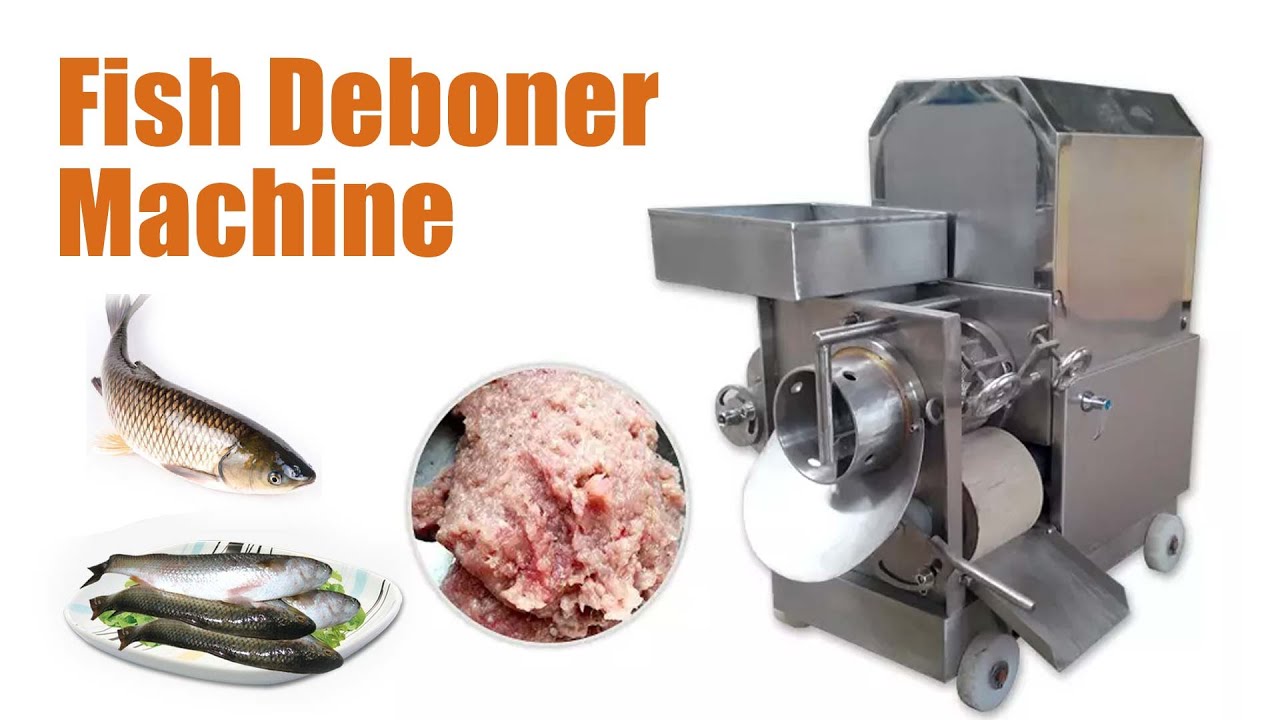10 years of experience as a food machinery equipment manufacturer
10 years of experience as a food machinery equipment manufacturer
The global seafood industry continually seeks innovative solutions to enhance efficiency, maximize yield, and improve product quality. Among the critical pieces of equipment in modern fish processing plants, the fish meat separator, particularly those with a Danish engineering provenance, has garnered significant attention. These machines play a pivotal role in optimizing the utilization of fish resources by efficiently separating edible meat from bones, skin, and other non-edible parts.

A fish meat separator, often referred to as a deboner or a meat-bone separator, operates on a principle that typically involves pressing fish, either whole (for smaller species) or pre-processed (such as headed and gutted larger fish), against a perforated drum or belt. The soft meat is extruded through the perforations, while the harder components like bones and skin remain on the outside and are subsequently discharged as waste. The precision and design of these components are crucial for the quality and yield of the recovered meat.
The adoption of advanced fish meat separation technology offers a multitude of benefits to seafood processors. One of the most significant advantages is the substantial increase in meat yield. Traditional manual deboning methods can be laborious and often leave a considerable amount of edible meat on the bones. Mechanical separators can recover a significantly higher percentage of this meat, directly impacting profitability by maximizing the usable portion of the raw material.
Furthermore, the quality of the separated meat is a key consideration. Well-designed separators, such as those often associated with Danish manufacturing standards, are engineered to handle the fish gently. This minimizes the damage to muscle fibers, resulting in a recovered meat product with a desirable texture and structure. This is particularly important for products like fish mince, fish cakes, surimi, and other value-added seafood items where the integrity of the raw material is paramount.
Operational efficiency is another compelling benefit. These machines can process large volumes of fish in a relatively short period, drastically reducing the manual labor required for deboning. This leads to:
The hygienic design is also a critical aspect, especially in food processing. Equipment originating from regions with stringent food safety standards, such as Denmark, often features robust stainless steel construction, smooth surfaces, and ease of disassembly for thorough cleaning and sanitation. This helps in minimizing the risk of cross-contamination and ensures compliance with international food safety regulations.
Denmark has a long-standing reputation for engineering prowess, particularly in a_gricultural and food processing machinery. This reputation is built on a foundation of precision, durability, innovation, and a strong focus on hygienic design. When considering a “Danish fish meat separator,” one might infer characteristics that align with this heritage. Such equipment is often characterized by its robust construction, typically using high-grade stainless steel (like AISI 304 or AISI 316L) to withstand harsh processing environments and ensure longevity.
Innovation in Danish engineering often translates to refined separation mechanisms that optimize yield while being gentle on the product. This might include specific designs of drums, belts, and pressure adjustment systems that can be fine-tuned for different types of fish and desired meat quality. The emphasis on user-friendly interfaces and ease of maintenance also contributes to the overall efficiency and lower total cost of ownership over the machine’s lifespan.
Moreover, Danish manufacturers are often at the forefront of incorporating energy-efficient designs and sustainable practices into their machinery, aligning with global trends towards more environmentally responsible food production.
Fish meat separators find applications across a broad spectrum of the seafood industry. Their versatility allows them to process various types of fish, including whitefish, fatty fish, and even shellfish in some specialized applications. Common uses include:
When evaluating a fish meat separator, several features are critical to consider. The material of construction is paramount, with stainless steel being the industry standard for food contact surfaces due to its corrosion resistance and ease of cleaning. The capacity of the machine, typically measured in kilograms or pounds per hour, should align with the processor’s throughput requirements.

The design of the separation mechanism itself, including the hole size of the drum or belt, and the pressure system, will significantly impact the yield and quality of the recovered meat. Machines offering adjustable settings provide greater flexibility for processing different species and sizes of fish. Ease of operation, cleaning, and maintenance are also vital. Quick disassembly and access to all parts for cleaning reduce downtime and ensure hygiene. Safety features, such as emergency stops and protective guards, are non-negotiable for operator protection.
Investing in such equipment requires careful consideration of the initial cost versus the long-term return on investment. Factors such as increased yield, reduced labor, improved product quality, and decreased waste all contribute to the economic justification. The reliability of the equipment and the availability of technical support and spare parts from the manufacturer or supplier are also crucial long-term considerations.
In conclusion, the fish meat separator is an indispensable tool in the modern seafood processing landscape. Equipment that embodies principles of robust engineering, hygienic design, and operational efficiency, often associated with established manufacturing regions like Denmark, can offer significant advantages to processors. By enabling higher yields, better quality control, and streamlined operations, these machines contribute to a more sustainable and profitable seafood industry, ensuring that valuable marine resources are utilized to their fullest potential.
